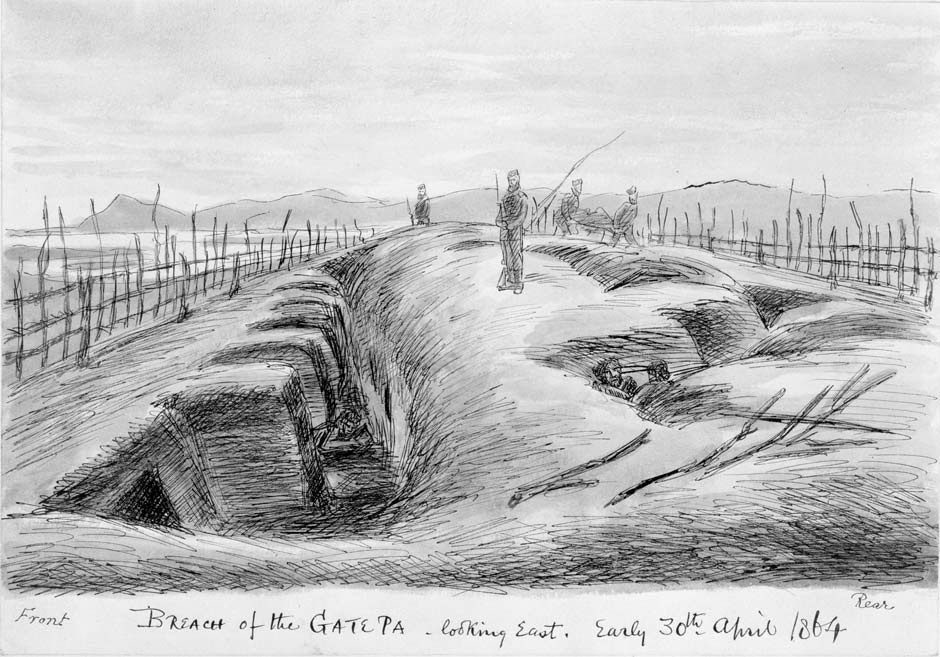Battle of Gate Pā - 1864
The Battle of Gate Pā is probably the battle which made the greatest impact in the history of the New Zealand Wars. In an effort to cut off reinforcements and food supplies which were filtering through to the Māori rebels in the Waikato area, the British sent their troops to Tauranga, where Gate Pā was situated, in order to attack the fortress.
Around 200 warriors from the Ngai-te-Rangi tribe were in place one side of the pā and around 35 warriors, mainly from the Ngati Koheriki tribe, reinforced the other side. The chief, Rawiri Puhirake was in charge.
On the 29th April 1862, the 43rd British regiment attacked the Pā. 1,700 soldiers were armed with Armstrong artillery; 8 mortars, 2 howitzers, 2 naval canon and 5 Armstrong guns. The Armstrong gun was a relatively new weapon, having been invested in 1854. The British troops knew by this time that an extremely well fortified Pā, even manned by armed Maori warriors who were numerically inferior in number, was not a future battle to be taken lightly.
General Cameron was in charge of the Imperial troops. The soldiers opened fire on Gate Pā, and during a short time bombarded it heavily. The following day the troops bombarded again, for a longer period, and this time succeeded in breaking opening a large point of entry to the pā. Cameron then sent an elite assault force to penetrate the breach opened up during the bombardment.
The assault force was made up of the 43rd Regiment and a naval brigade, an approximate total of 300 men. The part advanced succeeded in entering the pā, but within ten minutes were forced to rapidly withdraw, leaving around 100 dead and wounded soldiers inside the pā.
The British had thought their previous heavy bombardment has taken effect, owing to the fact that there has been little response fire from within the pā. However, on entering via the breach, the British troops found themselves being fired on at very close range from Māori in hiding.
Source: http://history-nz.org/wars4.html

A reinforcement group of soldiers was sent to relieve the trapped assault force in the pā. However, the reinforcements found themselves caught up in the retreat from the pa by the first assault force. From two separate areas of the pā, the Maori were firing on the two groups of troops, who were by this time caught up in the deadly crossfire.
During the night the Maori, who had not suffered a particularly heavy loss due to their well-planned strategy, evacuated the pā, taking with them the abandoned British weapons.
After the battle of Gate Pā there was much controversy about the defeat of the elite Imperial troops, heavily armed and far superior in number to the Maori.
The Maori warrior was a magnificent, brave and fierce fighter. Their strong spiritual ties to the land led them to fight with passion and vigour. The British soldiers had much respect for these fierce fighters. However, the Maori eventually and inevitably lost their war and land due to the superior firepower of the British troops, and the ever-continuing arrival of European settlers.
It is worth noting that many Maori were pro-government, and either joined the government troops during the wars, or remained neutral. They welcomed the beneficial economic relations with the European, and preferred to maintain good relations. On the other hand, other tribes joined up with the British or Colonial forces in order to avenge enemy tribes.
For further information, go to:
Battle of Gate Pā
NZ History - Gate Pā



